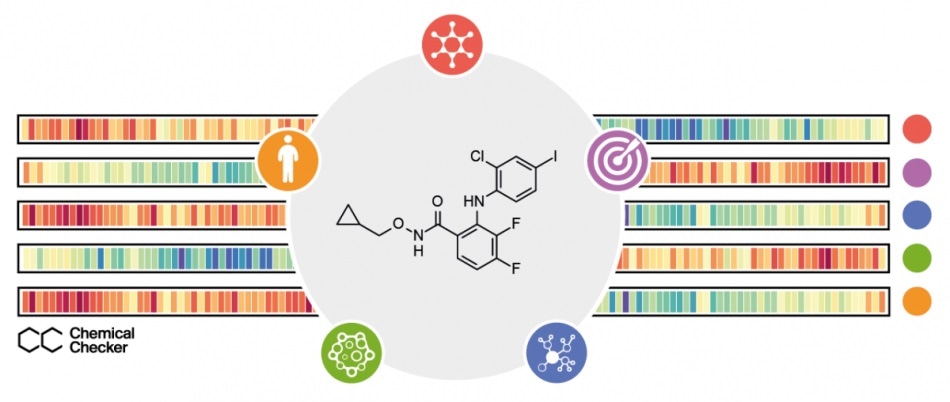A better understanding of the interaction between a molecule and the organism is important to consider its therapeutic potential.

The Chemical Checker provides processed, harmonized, and ready-to-use bioactivity information on more than 1M small molecules. Image Credit: SBNB lab, Institute for Research in Biomedicine.
Under the guidance of the ICREA researcher Patrick Aloy, IRB Barcelona’s Structural Bioinformatics and Network Biology (SBNS) laboratory have presented an online open-access tool called Chemical Checker that offers information about the impacts exerted by over 1M compounds in many different biological settings.
Published in the Nature Biotechnology journal, the Chemical Checker provides a rich portrait of the tiny molecular data available in the public domain. This presents an opportunity to make queries that otherwise would not be possible using only the chemical data.
By using experimental compounds and approved drugs, the SBNB laboratory has already demonstrated the tool’s ability by reverting the gene alterations of Alzheimer’s disease in vitro.
The researchers also discovered many compounds that could possibly replace “biologics” as treatments, for example, antibody therapies, which display high efficiency and specificity but are costly and exposed to pharmacokinetic issues.
We envision many applications for the Chemical Checker in the drug discovery process such as the formulation of logical queries to prioritize drug repositioning and combination opportunities, based on desired bioactivity traits.”
Patrick Aloy, Researcher, Structural Bioinformatics and Network Biology, Institute for Research in Biomedicine
The similarity principle
The Chemical Checker functions based on the similarity principle. Analogous compounds not only display unique chemical characteristics but also share biological behavior.
Molecules that elicit similar side effects or have analogous cell-sensitivity profiles usually have the same mechanism of action, even when their chemical structures seem to be completely unrelated.
The supposed “similarity principle” has been the motivating force of drug discovery and, in one way or another, the calculation of similarities among compounds lies behind a majority of the approaches used for plotting and exploiting the chemical space.
“Biological” similarities have been found to offer another method for navigating the chemical space, potentially disclosing clinically relevant, non-obvious similarities among the compounds.
Five levels of increasing complexity
Usually, a drug is an organic molecule (Chemistry) that communicates with one or more protein receptors (Targets), activating perturbations of biological pathways (Networks) as well as triggering phenotypic outcomes that can be quantified in cell-based assays (Cells) before sending them to patients (Clinics).
The Chemical Checker tool provides information on small molecules in all these five levels of growing complexity—that is, Chemistry, Targets, Networks, Cells, and Clinics.
With the Chemical Checker, we are pushing the similarity principle beyond chemical properties, reaching various ambits of biology and enabling the right level of experimental detail at each step of the drug discovery pipeline.”
Miquel Duran-Frigola, Research Associate, Institute for Research in Biomedicine
A collaboration with Amazon to target COVID
The Chemical Checker tool has already forged an association with Amazon to provide an open-access database and thus provide scientists worldwide with an extended range of molecules with the ability to fight the COVID-19 infection.
Amazon’s know-how in natural language understanding, machine learning, and text-mining had allowed the automatic analysis of scientific articles to be integrated into the Chemical Checker tool.
Source:
Journal reference:
Duran-Frigola, M., et al. (2020) Extending the small-molecule similarity principle to all levels of biology with the Chemical Checker. Nature Biotechnology. doi.org/10.1038/s41587-020-0502-7.